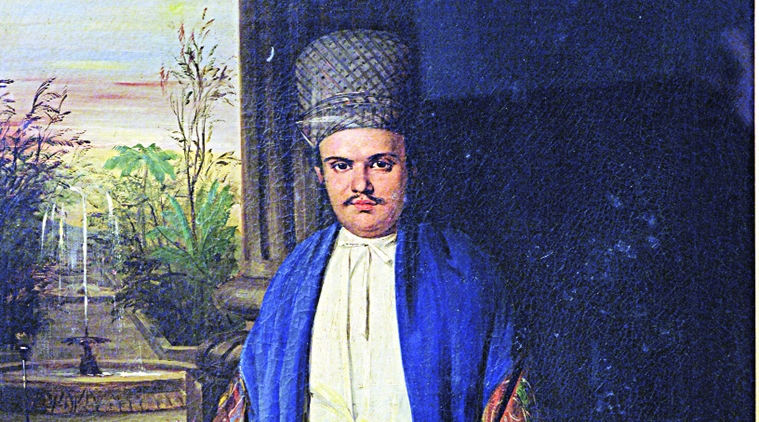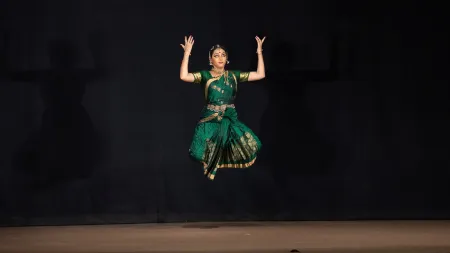- India
- International
Such a Long Journey: Contribution of Zoroastrians and Parsis to world culture
A major showcase, in the form of exhibitions and cultural events in Delhi, is a first to bring to focus the contribution of Zoroastrians and Parsis to world culture
 Exhibits include a painting of Rustom Jamsetjee Jejeebhoy
Exhibits include a painting of Rustom Jamsetjee Jejeebhoy
At the sprawling campus of Indira Gandhi National Centre for the Arts (IGNCA) in Delhi, against the orange and brown deluge of spring, a faint tune drifts out of the Twin Art Gallery. An old recording plays, cracking yet throaty, a hint at a veteran’s love for music. Shernaz Cama, 57, says, “I’ll tell you a joke about the Parsis.” She is seated in a room next to the gallery, where she has spent countless weeks setting up a part of what is the biggest showcase of Zoroastrian art and culture in Delhi. “Who is the most important thing or person in a Parsi household?” she says, “The dog, the servant, the kids, next comes the husband and finally you come along. See, we have the ability to laugh at ourselves. This is why we are survivors.”
The quintessential humour becomes an acquired taste as you make yourself home at the gallery: from images of the ceremony Navjote and of young Parsi boys training to be priests, or artefacts from Iran and Afghanistan, or, much like the apocryphal but popular “sugar in the milk” story, the Parsis’ absorption of other cultures that is visible through their textile and crafts. Whether it is cultural amnesia or its own dwindling numbers, the Parsi-Zoroastrians in India have always held an elusive space in the diverse cultural framework of this country.
Now, the Ministry of Minority Affairs, under their scheme Hamari Dharohar, in collaboration with the Ministry of Culture and the Parzor Foundation (UNESCO’s initiative), is hosting a cultural event called “The Everlasting Flame International Programme”. It involves three major exhibitions at IGNCA, National Museum and the National Gallery of Modern Art (NGMA) that form an apt introduction to the contribution of Zoroastrians and Parsis to world culture, philosophy and the arts.
Cama, of Parzor Foundation, has been working on this initiative for 35 years. The “Threads of Continuity: Zoroastrian Life and Culture” at IGNCA, an immersive exhibition begins the journey from the basic Zoroastrian philosophical tenet, “Humata, Hukata, Huvarashte” (good thoughts, good words, good deeds). “Zoroastrians have never really told their own story. It’s always been the West or outsiders. I have put 11 chapters from my own personal research and then I have got 36 Zoroastrians and non-Zoroastrians working in the field. We have voices, and have allowed our own people to speak for themselves,” says Cama.
During her years of research, the Lady Sri Ram College, Delhi University, professor also travelled to countries such as Iran and Afghanistan. She found “a very similar philosophy and ecological consciousness”. “We found that both tangible and intangible heritage coalesce,” she says. The collection in Delhi, hence, comes from varied sources — from private collections to The British Museum, British Library, The Ancient India & Iran Trust (Cambridge), Bombay Parsi Punchayet, Victoria and Albert Museum, SOAS, University of London, and the National Museum Delhi, among others.

The second exhibition, at the National Museum, brings Cama in collaboration with curators Sarah Stewart, Firoza Punthakey Mistree, Ursula Sims Williams, Almut Hintse, Pheroza Godrej. “The Everlasting Flame: Zoroastrianism in History and Imagination”, which has travelled to SOAS, is a visual narrative of the history of the community. Starting from the ancient world, the exhibition traces the development of the religion, tracing it from Iran to the Indian subcontinent and to the rest of the world.
The third culminates at the NGMA, which houses two key shows, “Painted Encounters — Parsi traders and The Community” ( a 2013 selection curated by Godrej and Mistree) and “No Parsi is an Island” (curated by Nancy Adajania and Ranjit Hoskote). The narrative, here, moves to the early colonial world, the Parsi participation during the time of economic assertion by various trading communities, and goes through the late colonial period to the present. In “No Parsi is an Island”, taking off from poet John Donne’s No Man is an Island, Hoskote and Adajania, along with Godrej, find a lyrical narrative in the works of 14 Parsi artists across 150 years, such as Pestonji Bomanji, MF Pithawalla and Sorab Pithawalla, along with the inclusion of non-Parsi artists, such as Sudhir Patwardhan and Atul and Anju Dodiya.
Portraits, furniture and textiles are a common feature, with each exhibit a mix of influences. Cama calls it the “magpie culture”, one that assimilates different cultural nuances from different places. “Whatever we like, we just put it in our box,” she says, pointing to the delicate Chinese embroidery on a Parsi silk. Portraits feature a similar influence. One at NGMA, for instance, is a portrait by a Chinese artist of a Parsi woman, its surface a delicate egg shell porcelain.
Keki N Daruwalla’s poem from Collected Poems 1970-2005, projected at NGMA’s entrance, sets a conclusive tone to our three-exhibition tour: Migration are always difficult:/ ask any drought,/ any plague;/ ask the year 1947./ Ask the chronicles themselves:/ if there had been no migrations; would there have been enough/ history to munch on.
The programme, which includes talks and symposiums till May, is a magnum effort, and has come with a deep realisation, says Cama. “The Census finds us so insignificant, they still haven’t given us the data for 2010. We decline by 10 per cent every decade. We are a completely inverted demographic triangle. The Swedish pattern of growth says that you are dangerously poised if you are 16 per cent over the age of 65. We are 35 per cent over the age of 75. Our effort is a race against time,” she says.
More Lifestyle
Apr 18: Latest News
- 01
- 02
- 03
- 04
- 05


































